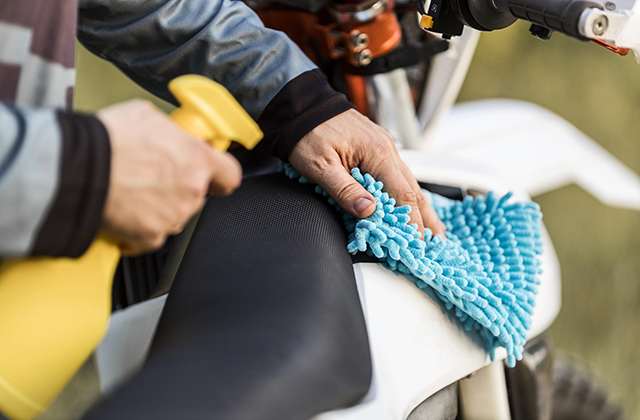1. Introduction: The Importance of Car Seat Upholstery
Car seat upholstery not only adds a touch of luxury to your vehicle but also plays a vital role in providing comfort and support during your journeys. Upholstery serves as a protective layer for your seats, shielding them from wear and tear caused by regular use. Additionally, a well-maintained and aesthetically pleasing upholstery can significantly enhance the overall value and appeal of your car. The best car seat cleaner can add luxury in your car.
2. Assessing Your Car Seats: Identifying Needs and Goals
Before diving into the upholstery process, it is essential to assess the current condition of your car seats. Identify any areas that require repair or replacement. Determine your goals and preferences regarding the desired look and feel of the upholstery. This assessment will help you make informed decisions throughout the process.
3. Choosing the Right Materials: Quality and Durability
When it comes to selecting materials for car seat upholstery, prioritize quality and durability. Opt for fabrics or leather that are resistant to fading, stains, and general wear. Consider factors such as breathability, ease of cleaning, and color options that complement your vehicle’s interior.
4. Tools of the Trade: Essential Equipment for Upholstery
To embark on your car seat upholstery project, you will need a set of essential tools. These include a staple gun, upholstery foam, batting, fabric or leather, sewing machine, scissors, measuring tape, and adhesive. Investing in high-quality tools will ensure precise and professional results.
5. Removing the Old Upholstery: Step-by-Step Guide
Before installing the new upholstery, you must remove the old one carefully. Start by disconnecting the seat from the car. Remove any attachments or fasteners, such as screws or clips. Gently detach the old upholstery, taking care not to damage the seat frame. Use a staple remover or pliers to remove staples or hog rings.
6. Preparing the Seats: Cleaning and Repairing
Once the old upholstery is removed, thoroughly clean the seats using a mild detergent or upholstery cleaner. Pay attention to any stains or dirt buildup and use appropriate cleaning techniques. Inspect the seat frame for any damages or loose components and make necessary repairs before proceeding.
7. Measuring and Cutting the New Upholstery: Accuracy is Key
Accurate measurements are crucial for a seamless upholstery installation. Use a measuring tape to measure the dimensions of each seat surface. Take note of any curves, contours, or irregularities in the seat shape. Transfer these measurements onto the fabric or leather and carefully cut out the pieces, leaving a bit of excess material for a secure fit.
8. Sewing Techniques: Professional Finishing Touches
If you opt for fabric upholstery, sewing skills will come in handy. Use a sewing machine to stitch together the fabric pieces, ensuring neat and secure seams. Take care to align patterns or stripes for a visually pleasing result. Reinforce areas that may experience more tension, such as corners and edges.
9. Installing the New Upholstery: Tips for a Perfect Fit
With the new upholstery pieces ready, it’s time to install them onto the seats. Begin by positioning the fabric or leather over the seat surface, making sure it aligns properly. Use a staple gun to secure the upholstery to the seat frame, starting from the center and working your way outward. Smooth out any wrinkles or folds as you go along.
10. Adding Extra Comfort: Foam Padding and Cushions
To enhance comfort, consider adding foam padding or cushions to the seats. Cut foam pieces to match the seat dimensions and attach them securely using adhesive or upholstery ties. This extra layer of padding will provide a more comfortable seating experience, especially during long drives.
11. Upholstery Maintenance: Keeping Your Seats in Pristine Condition
To maintain the longevity and appearance of your newly upholstered seats, it’s essential to follow proper maintenance practices. Regularly vacuum or brush off any dust or debris. Clean spills or stains promptly using suitable upholstery cleaners. Avoid harsh chemicals that may damage the fabric or leather. Protect the seats from excessive sunlight and use seat covers when necessary.
12. Upholstery Design and Styles: Choosing the Right Look
Car seat upholstery offers endless design possibilities to suit your taste and style. Consider various patterns, colors, textures, and stitching styles to create a unique and personalized look. Whether you prefer a classic, modern, or bold aesthetic, explore different options to find the perfect upholstery design for your vehicle.
13. Troubleshooting: Common Challenges and Solutions
During the upholstery process, you may encounter challenges such as fabric wrinkles, uneven stitching, or difficulties in securing the upholstery. Don’t panic! These issues can often be resolved with some patience and problem-solving. Refer to online tutorials or seek guidance from upholstery experts to overcome any obstacles you may face.
14. Upholstery Safety: Guidelines to Follow
While undertaking car seat upholstery, prioritize safety. Ensure that all seat belts, airbags, and other safety features remain fully functional and unobstructed. Avoid covering or interfering with any essential mechanisms or controls. Follow the manufacturer’s guidelines and consult professionals if you have any concerns about the safety implications of the upholstery process.
15. Conclusion
Mastering the art of car seat upholstery allows you to transform your vehicle’s interior into a stylish and comfortable space. By following the expert tips and techniques outlined in this article, you can achieve professional-quality results. Remember to prioritize quality materials, precision in measurements and cutting, and attention to detail during installation. With patience and practice, you’ll be able to create stunning upholstery that reflects your personal style and enhances your driving experience. The waxit.com.au car seat cleaner has protected my leather seat for almost 8 years now.
